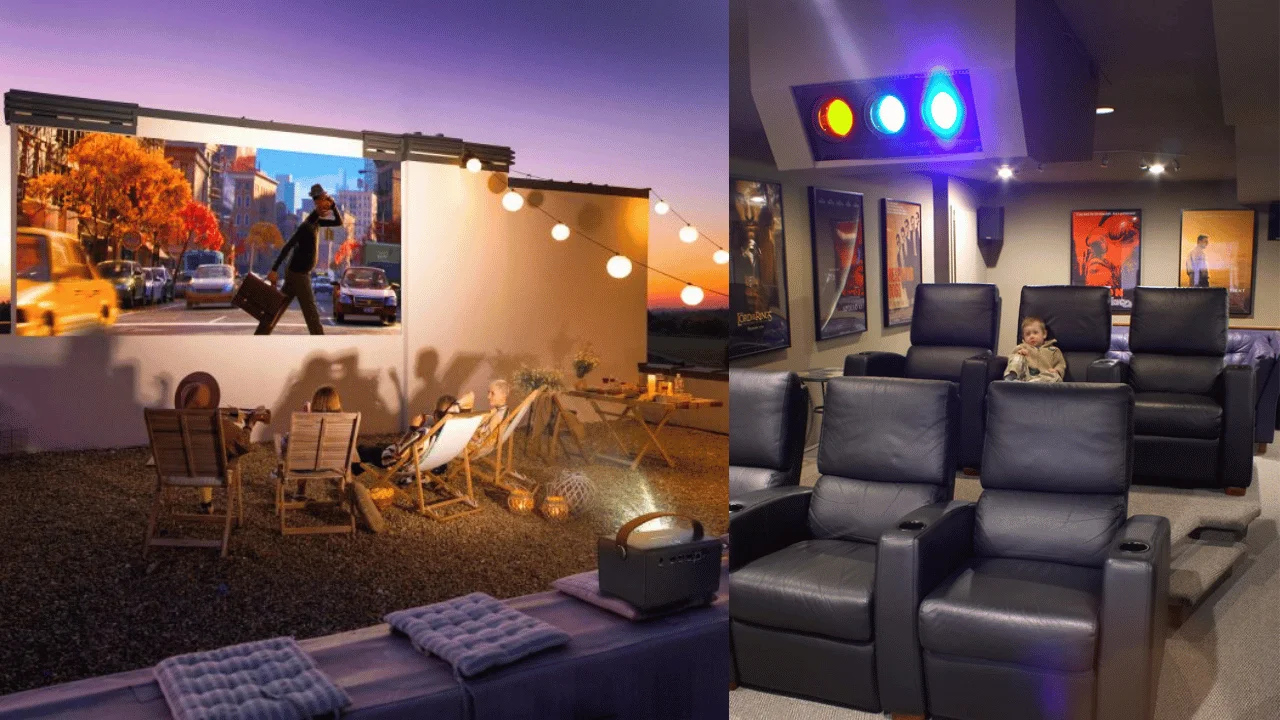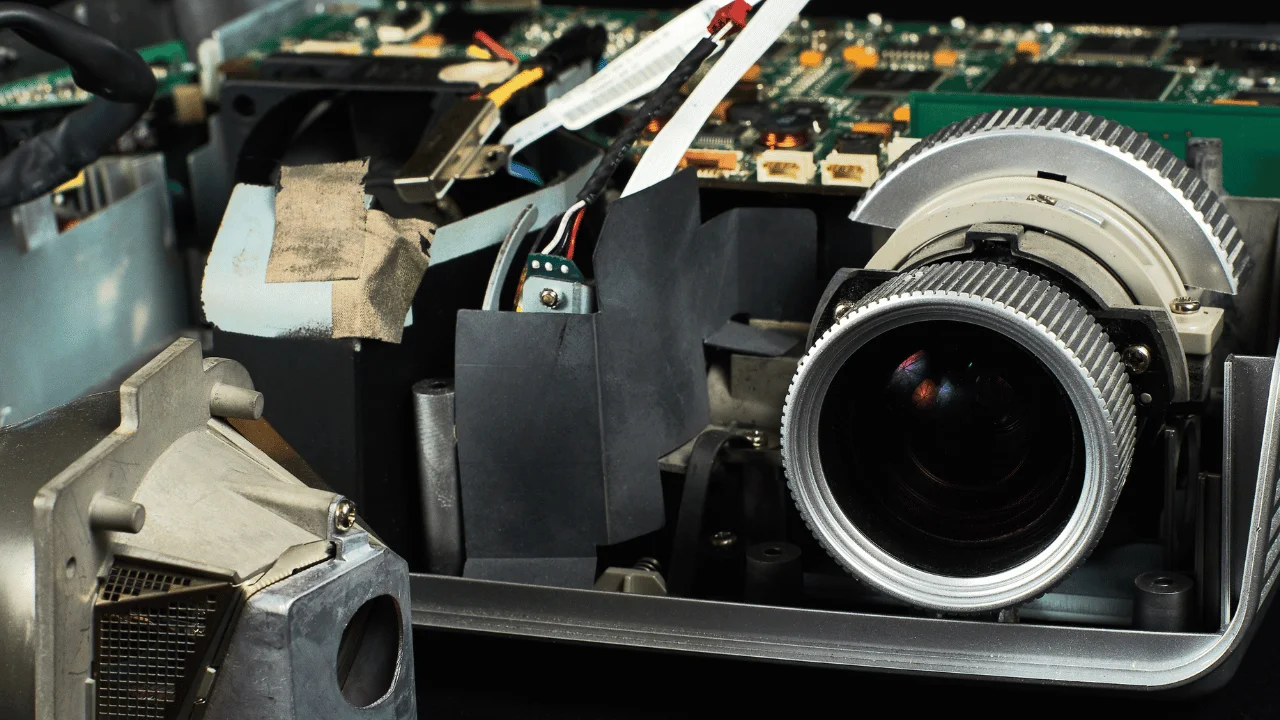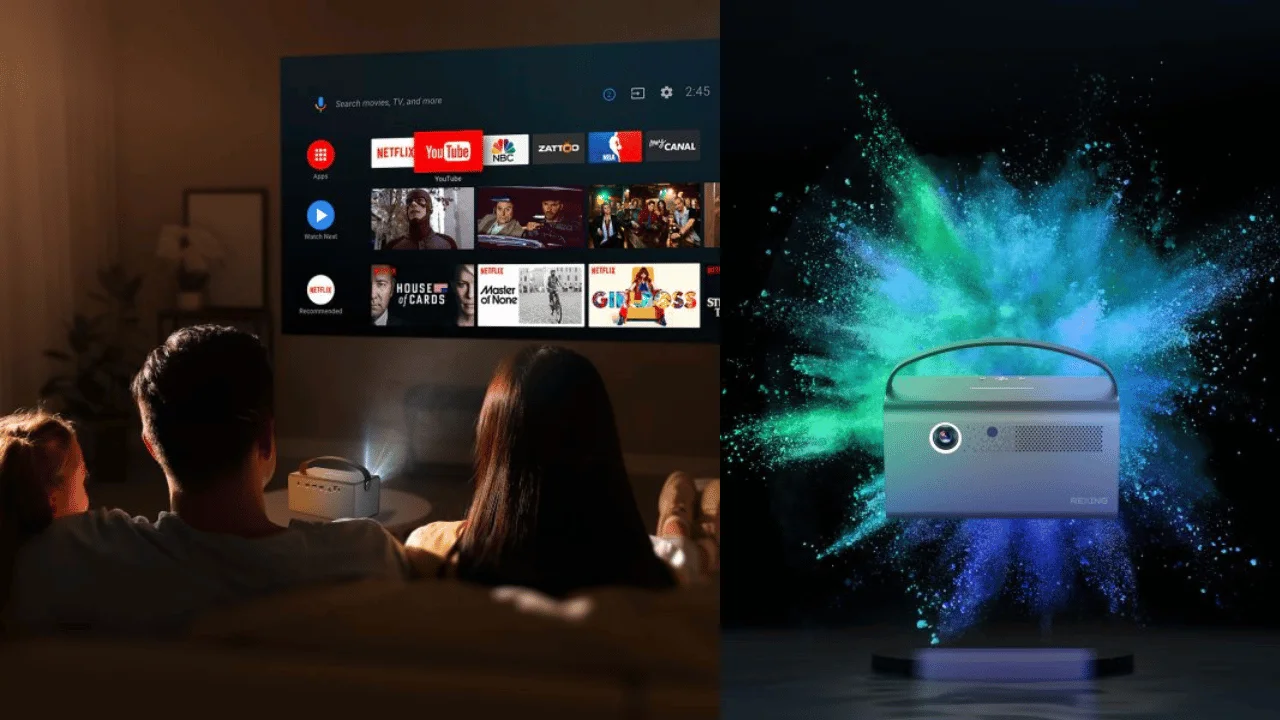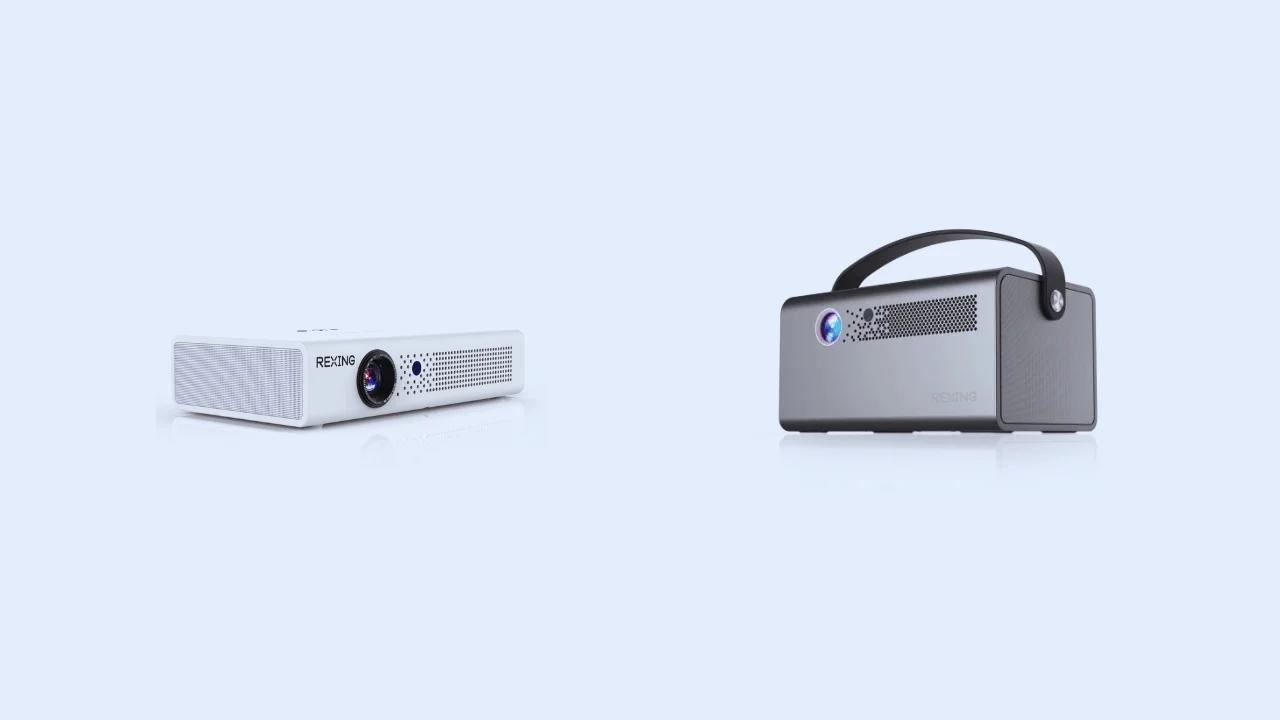A DLP projector is a type of digital projector that uses the Digital Light Processing technology for projecting images onto a screen or surface. DLP projectors are a popular choice for various applications, including home theaters, classrooms, and business presentations.
They use a chip with tiny mirrors to create the image, resulting in high-quality visuals with sharp details and vibrant colors. These types of projectors offer excellent contrast ratio and brightness, ensuring clear and vivid images even in well-lit environments. They also have a fast response time, making them perfect for displaying fast-moving content, such as videos and sports events.
With their compact size and lightweight design, DLP projectors are portable and easy to set up, offering flexibility and convenience for different projection needs.
Evolution Of Projectors

Projectors have come a long way, evolving from bulky CRT displays to the modern DLP technology that we use today.
From CRT to DLP Technology
Benefits Of DLP Over Traditional Projectors
Understanding DLP Technology

DLP technology in projectors uses microscopic mirrors to reflect light for sharp images, vibrant colors, and high contrast. It’s a popular choice for home theaters and office presentations due to its reliability and energy efficiency. Understanding how DLP projectors work can enhance your viewing experience.
Understanding DLP Technology DLP (Digital Light Processing) projectors have become a popular choice in the world of home theater systems and business presentations. They use a unique technology that offers sharp and vibrant images, making them an ideal option for various applications. In this section, we will take a closer look at how DLP projectors work and explore the key components that make them stand out.
How DLP Projectors Work
DLP projectors work by utilizing an array of microscopic mirrors, also known as Digital Micromirror Devices (DMD). These mirrors are the heart of the DLP technology and are responsible for producing the images we see on the screen. When a source image is projected onto the DMD, each mirror tilts either towards the light source or away from it, depending on the pixel’s brightness value.
The light source, typically a high-intensity lamp or LED, shines onto the DMD surface. The mirrors, controlled by an electronic signal, reflect the light towards the projection lens or away from it. This process creates a binary display, with bright pixels when the mirror tilts towards the lens and dark pixels when it tilts away. The mirrors on the DMD switch on and off thousands of times per second to create the illusion of a full-color image. This rapid switching speed, combined with the persistence of vision, allows the viewer to see a seamless and fluid image on the screen.
Key Components Of DLP Projectors
These types of projectors use several crucial components to ensure optimal image quality and performance. Let’s take a closer look at each of these components:
1. Digital Micromirror Device (DMD): It comprises thousands to millions of tiny mirrors, each representing a single pixel. These mirrors work together to reflect light and create the projected image.
2. Color Wheel: The color wheel is a rotating disc with different colored filters, usually red, green, and blue. As the wheel spins, it filters the light source into these primary colors, which then pass through the DMD and combine to produce a full-color image on the screen.
3. Projection Lens: The projection lens focuses and directs the light towards the screen, ensuring a clear and sharp image. The quality of the lens greatly impacts the overall image quality.
4. Light Source: DLP projectors use various light sources, including high-intensity lamps, LEDs, and lasers. These light sources provide the necessary brightness to illuminate the DMD and create vibrant images.
By understanding the inner workings of DLP technology-based projectors and the key components that make them tick, you can make an informed decision when choosing the right projector for your needs. Whether you’re setting up a home theater or delivering a business presentation, the advancements in DLP technology have made it a compelling option for delivering visually stunning content.
Advantages of DLP technology-based Projectors

When it comes to visual presentations, DLP technology-based projectors offer several advantages that make them a popular choice for both professional and personal use. From superior image quality to long-term reliability, DLP projectors provide a range of benefits that set them apart from other display technologies.
Sharp Image Quality
The DLP (Digital Light Processing) technology used in DLP projectors delivers exceptionally sharp and clear image quality. The use of micro-mirrors ensures precise pixel control, resulting in vibrant colors and high-definition visuals that captivate audiences. This advanced imaging technology makes DLP projectors an ideal choice for presentations, digital signage, and home theater setups.
Longevity And Reliability
DLP projectors are renowned for their longevity and reliability, thanks to their solid-state design and lack of moving parts. With a longer lifespan compared to other projection technologies, DLP projectors require minimal maintenance, reducing the total cost of ownership. Their dependable performance makes them a trusted choice for businesses and educational institutions looking for a reliable display solution.
Applications Of DLP Projectors
DLP (Digital Light Processing) projectors are widely used in various sectors due to their high-definition image quality, vibrant colors, and efficient performance. The applications of DLP projectors encompass home entertainment, business presentations, and the education sector. Let’s explore these applications in further detail.
Home Entertainment
DLP technology based projectors are a popular choice for home theaters, providing an immersive viewing experience with their high contrast ratios and sharp image quality. They are ideal for projecting movies, sports events, and gaming content onto large screens, creating a cinematic atmosphere within the comfort of your home. Furthermore, the compact size and portability of DLP projectors make them suitable for outdoor movie nights and gatherings.
Business Presentations
In the business setting, DLP technology-based projectors are essential for delivering impactful presentations in meeting rooms, conference halls, and boardrooms. Their ability to project sharp, detailed images even in well-lit environments makes them an ideal choice for professional settings. With the advancement of wireless connectivity features, DLP projectors facilitate seamless integration with various devices, allowing for efficient and engaging presentations.
Education Sector
Within the education sector, DLP projectors play a crucial role in enhancing the learning experience. They enable educators to display educational content, interactive media, and multimedia resources with clarity and precision, fostering an engaging and dynamic learning environment. DLP projectors are widely utilized in classrooms, training facilities, and auditoriums, contributing to an effective dissemination of knowledge and information.
Choosing The Right DLP Projector

Discovering the ideal DLP projector involves considering factors like resolution, brightness, and connectivity options. DLP projectors, known for their crisp images and vibrant colors, are popular choices for presentations and home entertainment. Selecting a DLP projector tailored to your needs ensures an immersive viewing experience.
DLP projectors have gained immense popularity due to their high image quality, vibrant colors, and sharp contrast. Whether you are a business professional, educator, or home theater enthusiast, finding the right DLP technology-based projector can enhance your visual experience significantly. To help you make an informed decision, consider the following factors:
Considerations For Different Needs
1. Resolution:
Choose a DLP projector that offers a resolution suitable for your needs. Higher resolutions like 1080p or 4K provide clearer and more detailed images, making them ideal for watching movies or giving presentations where precision is crucial.
2. Brightness:
Consider the ambient lighting conditions of the room where you will be using the projector. For well-lit environments, opt for a DLP projector with higher brightness levels, measured in lumens. Home theaters or dimly lit rooms can benefit from lower brightness levels, ensuring optimal image quality without eye strain.
3. Connectivity:
Evaluate the connectivity options of the projector to determine its compatibility with your devices. HDMI ports, USB inputs, and wireless capabilities provide flexibility for connecting laptops, gaming consoles, streaming devices, or any other multimedia sources you may require.
4. Throw Distance:
Measure the distance between the projector and the screen or wall space in your intended viewing area. DLP technology-based projectors have different throw distances, so make sure the projector you choose is capable of projecting a clear and well-sized image from your desired position.
Popular DLP Projector Brands
When it comes to DLP technology-based projectors, several brands have established a reputation for delivering top-notch quality and reliable performance. Here are a few popular brands to consider:
| Brand | Key Features |
|---|---|
| Sony | Offers a wide range of projectors with high brightness, excellent color accuracy, and advanced image processing technologies. |
| Epson | Known for their versatility, Epson projectors offer various models suitable for home theaters, classrooms, or businesses, ensuring vivid and immersive visuals. |
| Optoma | Provides a comprehensive selection of DLP projectors with excellent color reproduction, flexible installation options, and energy-efficient performance. |
| BenQ | Famous for their feature-rich projectors, BenQ offers models designed for different applications, including gaming, home theater, and professional presentations. |
| Acer | Offers reliable and cost-effective DLP projectors that deliver sharp images, reliable performance, and various connectivity options. |
Remember that these are just a few examples, as there are numerous reputable DLP technology-based projector brands available in the market. Research and read customer reviews carefully to find the brand that best suits your specific requirements. Making an informed decision when choosing a DLP projector will ensure that you enjoy a captivating visual experience tailored to your needs. Consider the resolution, brightness, connectivity options, and throw distance to narrow down your options. Explore popular brands like Sony, Epson, Optoma, BenQ, and Acer to find a projector that matches your expectations.
Setting Up And Calibrating DLP Projectors
Setting up and calibrating DLP projectors is crucial for optimal viewing experiences. Here’s how to do it right:
Optimal Environment For Projection
Ensure the room is dimly lit and free from direct sunlight for clear projection quality.
Calibration Tips For Enhanced Viewing Experience
- Adjust the projector’s distance from the screen for the best image size and clarity.
- Use the projector’s settings to fine-tune brightness, contrast, and color saturation.
- Eliminate any glare on the screen by adjusting the angle of the projector.
- Regularly clean the projector’s lens to maintain sharp image quality.
Troubleshooting Common DLP Projector Issues
When it comes to DLP projectors, troubleshooting common issues is essential to ensure optimal performance. From image distortion to overheating problems, addressing these issues promptly can help maintain the quality of your projection. Let’s take a closer look at some of the common DLP projector issues and how to troubleshoot them effectively.
Dealing With Image Distortion
Image distortion can be a frustrating issue when using a DLP projector. It may appear as blurry, pixelated, or skewed images, impacting the overall viewing experience. To troubleshoot image distortion, consider the following:
- Check the projector lens for any dust or smudges that may be affecting the image quality. Clean the lens carefully with a soft, lint-free cloth.
- Adjust the projector’s focus and keystone settings to ensure the image is properly aligned and sharp.
- Inspect the input source (e.g., laptop, DVD player) for any resolution or connectivity issues that could be causing the distortion.
Overheating Problems And Solutions
Overheating can lead to performance issues and potential damage to the DLP projector. Here are some tips for addressing overheating problems:
- Ensure the projector has proper ventilation and is not placed in a confined space. Clear any obstructions that may be blocking airflow around the projector.
- Check the projector’s cooling system for dust buildup and clean the vents and fans to improve airflow and heat dissipation.
- Reduce the projector’s brightness and use an eco mode if available to lower the heat generated during operation.
Future Trends In DLP Technology
DLP projectors are rapidly advancing and shaping the future of display technology. These projectors use Digital Light Processing to provide high-quality images and vibrant colors, making them ideal for professional presentations and home entertainment setups. Stay ahead of the curve by adopting the latest trends in DLP technology.
Integration With Smart Devices
Gone are the days when projectors were limited to connecting only with traditional devices like laptops and PCs. The future of DLP (Digital Light Processing) projectors promises seamless integration with smart devices, bringing convenience and flexibility to a whole new level. With DLP technology adapting to the changing times, users can now connect their smartphones, tablets, and even smartwatches to projectors effortlessly.
Whether you need to share a presentation from your smartphone, stream your favorite movies from a tablet, or showcase stunning visuals from your smartwatch, the integration of DLP projectors with smart devices can make it happen. This advancement bridges the gap between personal devices and projection technology, allowing users to display content directly from their handheld devices without the need for additional cables or adapters.
Enhanced Connectivity Features
In addition to integration with smart devices, the future of DLP projectors brings enhanced connectivity features that cater to the evolving needs of users. With improved connectivity options, DLP projectors can seamlessly connect to various devices, networks, and platforms, making it easier than ever to deliver content in any setting.
Imagine effortlessly connecting your DLP projector to a wireless network and streaming content directly from online platforms such as YouTube or Netflix, without the hassle of connecting additional devices. These enhanced connectivity features eliminate the need for physical connections, allowing for a clutter-free setup and a streamlined user experience.
Furthermore, future DLP projectors are expected to support multi-device connectivity, enabling users to switch seamlessly between different devices without the need for manual adjustments. Whether you want to switch from your smartphone to a laptop or from a tablet to a gaming console, the enhanced connectivity features of DLP projectors will make the transition smooth and hassle-free.
In conclusion, the future trends in DLP technology are all about integration with smart devices and enhanced connectivity features. As technology continues to advance, DLP projectors are evolving to cater to the needs of modern users who demand seamless integration and effortless connectivity. With these advancements, the possibilities for creating immersive experiences and sharing content are limitless. So, get ready to embrace the future of DLP projectors and unlock a world of endless possibilities.
Frequently Asked Questions
The key features of a DLP projector include high image quality, compact size, and seamless integration with various devices. DLP projectors are also known for their high contrast ratio and long-lasting performance, making them an ideal choice for both business and home use.
A DLP projector works by reflecting light through thousands of tiny mirrors onto a digital micro-mirror device (DMD), which then projects the image onto the screen. This process creates sharp and vibrant visuals with minimal distortion, making DLP projectors a popular choice for presentations and entertainment purposes.
The advantages of using a DLP projector include superior image quality, lower cost of ownership, and reliable performance. DLP technology also provides better color accuracy, reduced pixelation, and minimal maintenance requirements, making it an excellent choice for various projection needs.
Conclusion
To summarize, a DLP projector is a technological wonder that enhances visual experiences with its superior image quality, exceptional color accuracy, and impressive clarity. Compact and versatile, it offers a multitude of applications for both personal and professional use. Whether you’re viewing movies, giving presentations, or playing video games, a DLP projector is an excellent choice to amplify your visual content.
Embrace this innovative technology to elevate your entertainment or presentation to new heights. Discover the immersive world of DLP projectors today.
Explore our blog about devices.